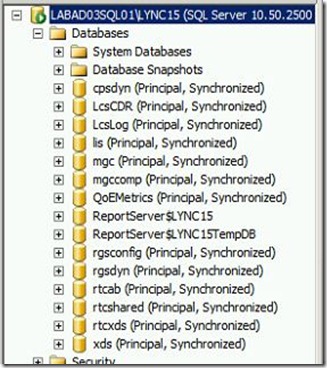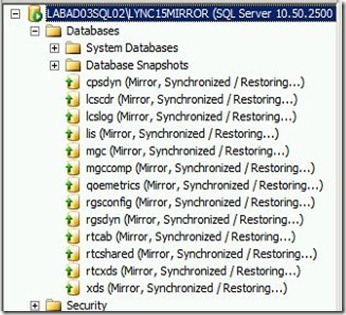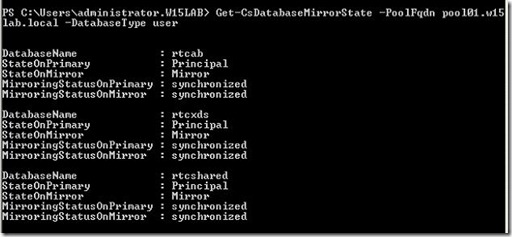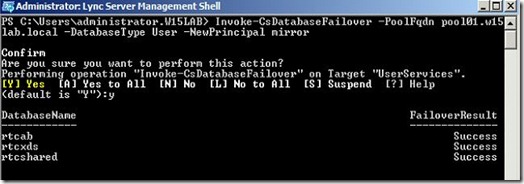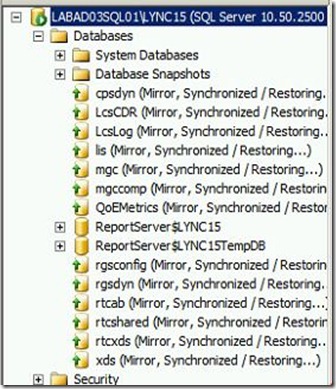NOTE: The following post is based on Lync Server 2013 Preview. Procedures and screenshots are subject to change when Lync Server 2013 is RTM.
In my previous post, I described how to add a SQL mirror to your back-end database for SQL high availability. In this post, I will describe how to failover and then fallback the SQL databases between the mirror.
Before failing over the SQL mirror, you need to determine whether or not your back-end database is hosting the Central Management Store (CMS) database. You can determine this by running the following command:
Get-CsService –CentralManagement
If the output shows the pool that you are failing over the back-end for then you must failover the CMS database. In my lab I have all databases as part of the mirror configuration: User, CMS, Archiving, Monitoring, Apps, PersistentChat, PersistentChatCompliance:
Primary SQL Node:
Mirror SQL Node:
You can also check the state of your mirror status by running the following:
Get-CsDatabaseMirrorState –PoolFQDN pool01.w15lab.local –DatabaseType User
The supported –DatabaseType values are: App, Archiving, CentralMgmt, Monitoring, Provision, User, PersistentChat, PersistentChatCompliance
I need to run the following commands to failover all databases:
Invoke-CsDatabaseFailover –PoolFQDN pool01.w15lab.local –DatabaseType User –NewPrincipal mirror
Now I run the similar command for the rest of my database types:
Invoke-CsDatabaseFailover –PoolFQDN pool01.w15lab.local –DatabaseType App –NewPrincipal mirror
Invoke-CsDatabaseFailover –PoolFQDN pool01.w15lab.local –DatabaseType CentralMgmt –NewPrincipal mirror
Invoke-CsDatabaseFailover –PoolFQDN pool01.w15lab.local –DatabaseType Archiving –NewPrincipal mirror
Invoke-CsDatabaseFailover –PoolFQDN pool01.w15lab.local –DatabaseType Monitoring –NewPrincipal mirror
Invoke-CsDatabaseFailover –PoolFQDN labad03lyse01.w15lab.local –DatabaseType PersistentChat –NewPrincipal mirror (note that my persistent chat pool is my Standard Edition server)
Invoke-CsDatabaseFailover –PoolFQDN labad03lyse01.w15lab.local –DatabaseType PersistentChatCompliance –NewPrincipal mirror (note that my persistent chat pool is my Standard Edition server)
After all commands have been executed, I can look at my SQL nodes again and see that my mirror node now has the active database:
Primary SQL Node:
Mirror SQL Node:
When you are ready to fallback to the primary SQL node, just run the same commands but change the –NewPrincipal parameter to “primary”
Invoke-CsDatabaseFailover –PoolFQDN pool01.w15lab.local –DatabaseType User –NewPrincipal primary
This post describes how to manually fail your mirror databases over to the secondary SQL node and then fall back.

